Disclosure: This article contains affiliate links. We may earn a commission from purchases at no extra cost to you, which helps our travel content.
As a firefighter who's spent years navigating both emergency scenes and limestone caverns, I've developed a knack for uncovering hidden spaces others might miss. Bhutan's Paro Valley is renowned for its iconic Tiger's Nest Monastery clinging dramatically to the cliffside, but my recent conference trip to Thimphu led me to extend my stay and explore Paro's lesser-known historical gems. What I discovered was a valley rich with sacred caves, forgotten temples, and ancient ruins that tell a deeper story of Bhutan's spiritual heritage—all while sampling some of the most remarkable butter tea I've encountered in my travels.
Dzongdrakha: The Lesser-Known Tiger's Nest
Often called the 'mini Tiger's Nest,' Dzongdrakha is a cliff-hugging temple complex that predates its famous cousin but receives a fraction of the visitors. Located about 20 minutes from Paro town, this collection of small temples sits perched against a sheer limestone cliff face that immediately caught my caver's attention.
The approach involves a moderate 45-minute hike through pine forests, significantly gentler than the climb to Tiger's Nest. What struck me most was the absolute tranquility—while I shared Tiger's Nest with dozens of tourists, at Dzongdrakha I encountered only two elderly local pilgrims who smiled knowingly when they saw me examining the natural cave formations behind the main shrine.
The site features three main temples, each housing ancient statues and murals. The leftmost temple contains a sacred footprint said to belong to Guru Rinpoche himself. From the prayer flag-adorned viewpoint, you can see the entire Paro Valley spread before you, with Rinpung Dzong dominating the landscape below.

💡 Pro Tips
- Visit in early morning (before 9am) when the light hits the cliff face perfectly for photographs
- Bring a headlamp to properly explore the small cave recesses behind the temples
- Remove shoes before entering each individual temple, not just at the complex entrance
Jangsarbu Lhakhang: The Hidden Cave Temple
My firefighter's instinct for finding hidden passages led me to Jangsarbu Lhakhang, a cave temple that doesn't appear in most guidebooks. Located near Drugyel Dzong, this natural limestone cave has been converted into a temple that houses sacred artifacts dating back to the 8th century.
My guide initially hesitated to take me here, mentioning it wasn't on the usual tourist route. After explaining my background in caving and deep respect for sacred spaces, he relented, making a quick call to arrange permission from the caretaker monk.
The approach requires a 30-minute hike through terraced rice fields and then up a forested hillside. What makes this site extraordinary is the natural limestone formation that creates a perfect dome ceiling inside the cave, adorned with centuries of soot from butter lamps that have blackened natural stalactites.
The monk caretaker showed me a small side passage that opens into a meditation chamber said to have been used by Guru Rinpoche. The air inside was cool and still, with that distinctive limestone cave scent that felt oddly familiar despite being halfway around the world from the Welsh caves of my youth.
I was grateful for my trekking poles on the slippery descent back to the main road, especially after an unexpected afternoon shower made the trail treacherous.

💡 Pro Tips
- Bring a small offering (butter for lamps or incense) for the caretaker monk
- Visit between 10am-3pm when the caretaker is most likely to be present
- Pack a waterproof dry bag for electronics, as the cave interior can be surprisingly damp
Drukgyel Dzong: The Fortress of Victory's Secret Chambers
While Drukgyel Dzong itself is a well-known ruin (recently undergoing restoration), few visitors discover the network of chambers beneath the main fortress. As someone who's spent a career assessing structural integrity during emergency situations, I was fascinated by the engineering of these underground spaces.
Built in 1649 to commemorate Bhutan's victory over Tibetan invaders, the fortress burned in 1951, leaving impressive stone ruins. What's not immediately apparent is that some underground chambers remained intact and accessible—if you know which guardian to ask.
My guide introduced me to an elderly caretaker who, after some conversation in Dzongkha, led us through a small wooden door near the eastern wall. We descended worn stone steps into a cool chamber that once served as a treasury. Connected passages led to what appeared to be storage rooms and possibly a dungeon.
The most remarkable feature was an intact water system—channels carved into stone that once brought fresh spring water directly into the fortress. This reminded me of similar systems I'd seen in Japanese castle ruins during my previous travels.
The caretaker explained that these chambers were used to store valuable trade goods, including tea from China and India. As both a tea enthusiast and someone fascinated by historical architecture, this connection between my two passions was particularly meaningful.
After exploring, we sat outside the ruins and shared butter tea from the caretaker's thermos. I was glad I'd brought my insulated tea tumbler to save some for later appreciation.

💡 Pro Tips
- Visit in late afternoon when most tour groups have departed
- Bring a small monetary donation for the restoration project to increase chances of seeing restricted areas
- Wear sturdy shoes with good traction for the uneven underground surfaces
Kyichu Lhakhang's Meditation Caves
Kyichu Lhakhang (Kyerchu Temple) is one of Bhutan's oldest temples, built in the 7th century. While the main temple is a popular stop, few visitors venture behind the complex to discover the meditation caves used by monks for centuries.
These caves reminded me of the smaller limestone formations in South Wales where I first developed my love for underground exploration. Though not extensive, these shallow natural recesses have been enhanced with stone masonry to create perfect meditation chambers.
Access requires permission from the temple caretakers, but my genuine interest in both the spiritual significance and geological formation of the caves helped secure an invitation. The head lama explained that these caves maintain a constant temperature year-round—a fact I could appreciate from both spiritual and practical perspectives, having spent time in fire stations where maintaining environmental stability is crucial.
Inside the main meditation cave, I noticed a small altar with tea offerings—a practice that bridges my interests perfectly. The lama explained that tea meditation is practiced here, with different varieties used for different purposes. The earthy, smoky butter tea used in daily practice differs significantly from the ceremonial teas reserved for special occasions.
I shared some of my own tea knowledge, mentioning similarities to certain Japanese practices I'd documented. This led to an impromptu tea session where the lama demonstrated proper Bhutanese tea preparation using a traditional butter churn called a dongmo. I was grateful for my travel tea set which allowed me to offer some Taiwanese oolong I'd brought as a gift.

💡 Pro Tips
- Visit early morning when senior monks are more likely to be available for permission
- Bring a small offering of tea leaves from your home country as a conversation starter and sign of respect
- Learn basic Dzongkha greetings to show respect when requesting access to restricted areas
Kila Nunnery: The Forgotten Sister of Tiger's Nest
Perched on a cliff face just as dramatic as Tiger's Nest but receiving perhaps 1% of the visitors is Kila Goemba (Chele La Nunnery). This nunnery clings to the mountainside at 3,500 meters above sea level and dates back to the 9th century.
The approach requires a drive up to Chele La Pass (Bhutan's highest road pass at 3,988m) followed by a moderately challenging hike down a forested trail. My firefighter's fitness came in handy here, though I noticed the altitude making the hike more demanding than expected.
What makes Kila truly special is both its dramatic setting and the opportunity to learn about female Buddhist practitioners in a country whose famous monasteries are predominantly male. The nuns welcomed me warmly, curious about my unusual combination of interests in caving and tea culture.
The oldest nun, who'd been in residence for over 60 years, showed me their modest tea room where they prepare butter tea using a technique slightly different from what I'd seen elsewhere in Bhutan. They add a pinch of local herbs I couldn't identify, creating a more fragrant version than the standard butter tea.
The nunnery contains several small temples built directly into the cliff face, incorporating natural cave features. In one chamber, water drips from the ceiling into a small pool considered sacred—the limestone creating natural formations similar to those I've documented in caves across Asia.
I was grateful for my altitude sickness medication given the challenging elevation, and equally thankful for my merino wool base layer as temperatures dropped significantly in late afternoon at this elevation.
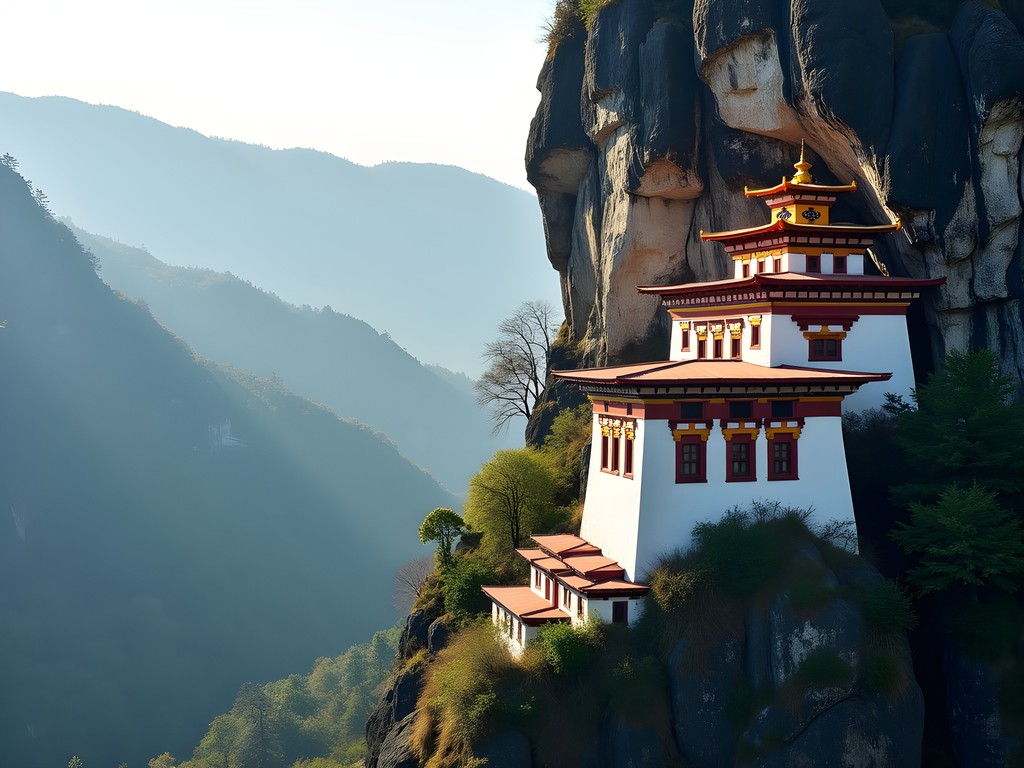
💡 Pro Tips
- Start early as the nunnery closes to visitors at 4pm
- Bring cash donations rather than food offerings (the nuns mentioned they receive excess food but struggle with maintenance costs)
- Acclimatize properly before attempting this visit if you're sensitive to altitude
Rinpung Dzong's Forgotten Armory
Rinpung Dzong dominates Paro town and features on most standard itineraries. However, during my visit, I happened to arrive during an annual cleaning day when certain areas normally closed to tourists were temporarily accessible.
The fortress-monastery contains a fascinating armory chamber that houses weapons dating back to the 17th century. As someone who's worked with modern emergency equipment my entire career, I found the historical firefighting implements particularly fascinating—wooden pumps and leather buckets that reminded me how universal the challenge of fire protection has been across cultures.
My guide mentioned that most tourists never see this section, as it's typically reserved for administrative functions. The caretaker, noticing my professional interest in the historical safety equipment, showed me a restored wooden fire pump that used to draw water from the nearby river in case of fire within the dzong.
The armory also contained tea storage vessels that once held valuable tea bricks used as currency—another fascinating intersection of my interests. These large copper containers were designed to keep tea dry during the monsoon season while preventing rodent damage.
The most remarkable discovery was a small side room containing ancient texts on natural disaster prevention, including earthquakes and fires. My guide translated portions describing how building designs incorporated features specifically to minimize fire spread—techniques not dissimilar to modern compartmentalization approaches we use in contemporary firefighting.
Before leaving, I purchased a handcrafted replica of a traditional Bhutanese wooden tea cup from the small craft shop near the entrance. While not strictly an antique, it was made using traditional methods and supports local artisans preserving historical crafts. I've found my travel document organizer perfect for safely storing small, fragile souvenirs like this during the remainder of my travels.
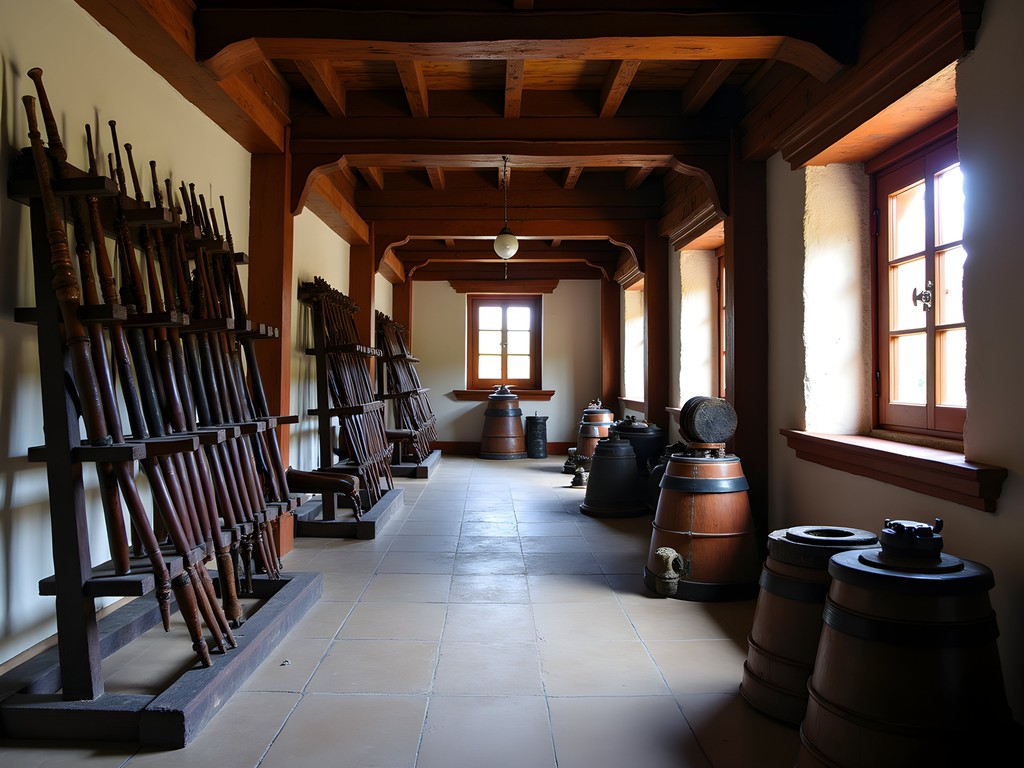
💡 Pro Tips
- Ask specifically about annual cleaning or maintenance days when planning your visit timing
- Show genuine interest in specific historical aspects to gain access to restricted areas
- Learn a few phrases about your professional background in the local language to help explain your specialized interest
Taktshang Goemba's Hidden Tea House
While Tiger's Nest (Taktshang Goemba) itself is Bhutan's most iconic site, few visitors discover the small tea house hidden in a cave below the main complex. This tiny establishment, run by a monk who's lived at Tiger's Nest for over 40 years, offers perhaps the most extraordinary tea experience in Bhutan.
Reaching this spot requires taking a small, unmarked path that branches left about 100 meters before the final approach to Tiger's Nest. The narrow trail skirts the edge of the cliff and isn't for the faint-hearted—my years navigating precarious cave passages made it manageable, but I wouldn't recommend it for those with vertigo.
The tea house itself occupies a natural cave that's been minimally modified with a wooden platform and simple seating. What makes this place special is both the spectacular view—perhaps even better than from Tiger's Nest itself—and the unique tea served here.
The elderly monk prepares a rare wild tea harvested from plants growing on the nearby cliffs, mixed with herbs he collects himself. Unlike the butter tea common throughout Bhutan, this preparation is more similar to Chinese medicinal teas I've encountered in Taiwan.
The monk explained that this tea house has operated continuously for over 300 years, originally serving pilgrims making the difficult journey to Tiger's Nest. Today, it mainly serves the monastery's residents, with occasional visitors like myself who happen to discover it.
I spent nearly an hour here, sipping tea and listening to the monk's stories about the monastery's history. He seemed genuinely pleased to share his knowledge with someone who appreciated the nuances of tea preparation. Before leaving, I made a donation toward the maintenance of this hidden gem and purchased a small package of his unique tea blend.
My packable daypack proved perfect for carrying my tea purchase and other small treasures collected during my exploration of Paro's hidden historical sites.
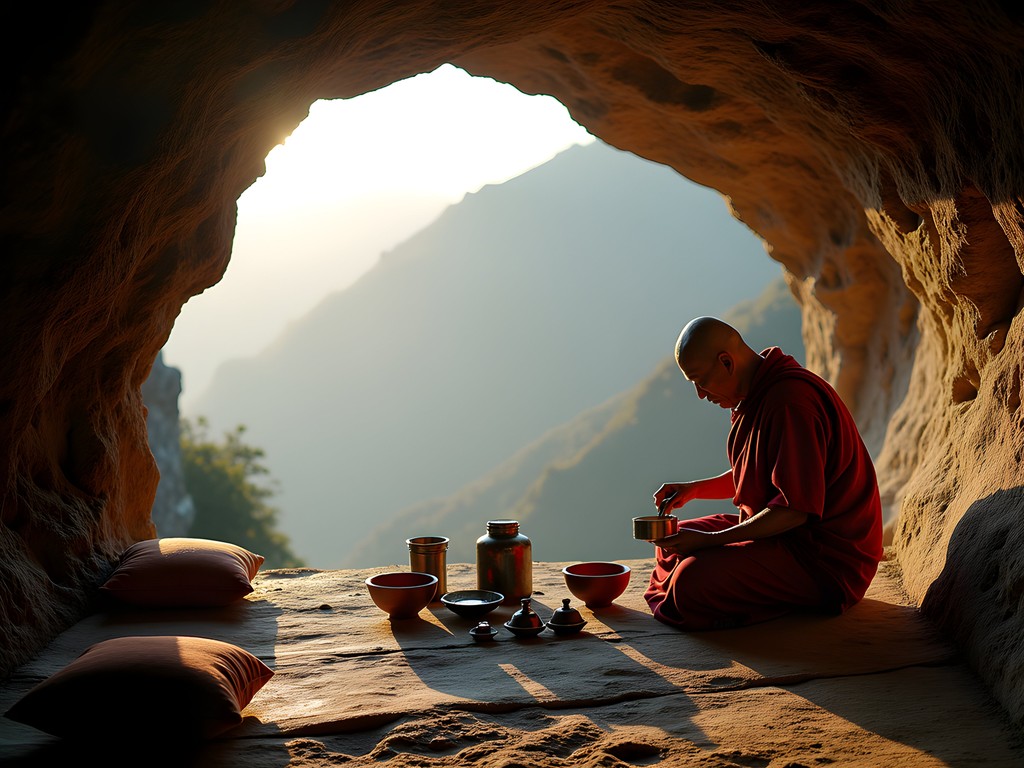
💡 Pro Tips
- Only attempt finding this spot if you're comfortable with exposed trails and have good hiking experience
- Bring cash for donations and tea purchases—no credit cards accepted here
- Ask your guide about the 'old tea cave' specifically, as they might not mention it otherwise
Final Thoughts
As I hiked back down from Tiger's Nest on my final day in Paro Valley, I couldn't help reflecting on how my seemingly disparate passions—caving and tea culture—had merged perfectly in this Himalayan kingdom. Bhutan's historical treasures go far beyond the postcard-perfect monasteries, extending into hidden caves, forgotten chambers, and ancient tea traditions that few visitors ever experience.
What makes these sites special isn't just their historical significance but the living traditions they maintain—traditions that connect modern Bhutanese life to practices established centuries ago. As someone who's explored cave systems and tea cultures across Asia, I found Paro Valley's hidden historical treasures uniquely compelling in how they blend natural and human heritage.
If you're planning a visit to Bhutan, I encourage you to look beyond the standard itinerary. Express your specific interests to your guide, show genuine curiosity about aspects of Bhutanese culture that resonate with your own passions, and you may find yourself granted access to places and experiences that transform your journey from merely memorable to truly extraordinary. The Kingdom of Bhutan has many faces—the one it shows you depends largely on what you seek.
✨ Key Takeaways
- Most of Paro Valley's hidden historical sites require permission from caretakers—showing genuine interest and respect is key to gaining access
- The connection between natural cave formations and Bhutanese Buddhist architecture creates unique sacred spaces unlike those found elsewhere in Asia
- Bhutan's tea culture varies significantly between monasteries and nunneries, with each location developing unique preparation techniques
- Visiting during annual events or maintenance periods can provide rare access to normally restricted historical areas
📋 Practical Information
Best Time to Visit
March to May (spring)
Budget Estimate
$250-350 per day (minimum daily package required by Bhutan)
Recommended Duration
7-8 days
Difficulty Level
Moderate (Some Hiking Required, Altitude Considerations)



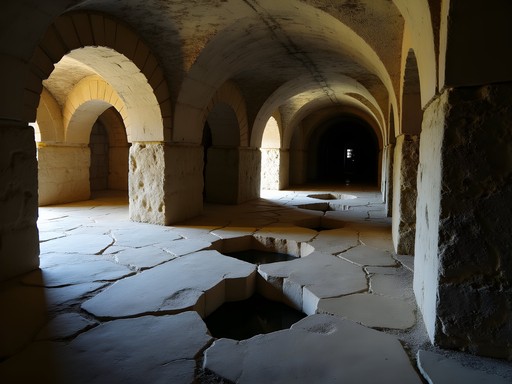
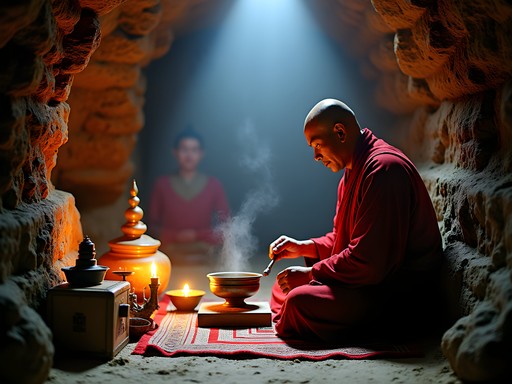
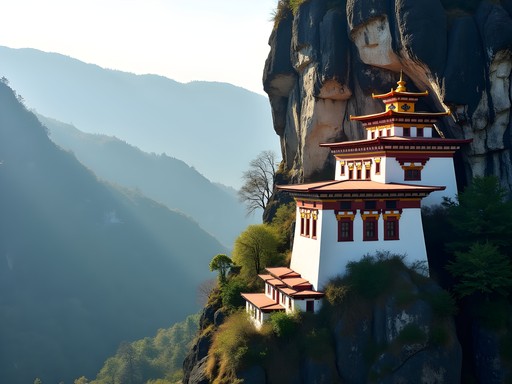









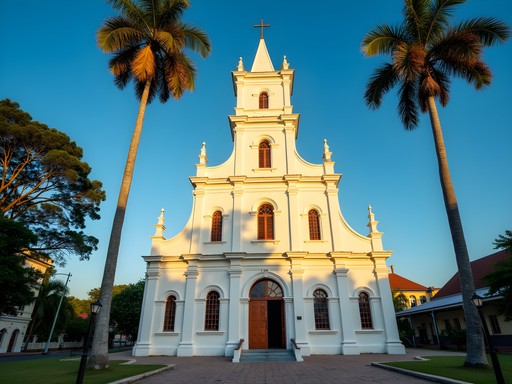
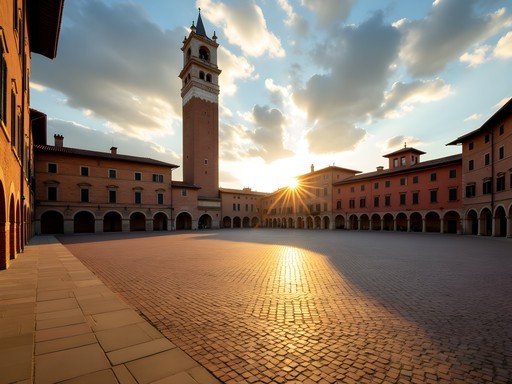
Comments
escapediver
As someone who also enjoys caving, I appreciate your perspective on these hidden spaces! I visited Tiger's Nest two years ago but had no idea about these other historical sites. Your firefighter background gives you such a unique lens for travel writing. Adding Paro Valley to my return-visit list just for these hidden gems!
Fatima Sims
Jacob, your post brought back so many memories of my time in Bhutan! I visited last spring and managed to see Dzongdrakha, but missed several of your other recommendations. The local guide I had was surprised when I asked about the 'lesser-known Tiger's Nest' - apparently not many tourists request it! For anyone planning a trip, I highly recommend bringing a good headlamp if you plan to explore any of the caves Jacob mentions. I used my headlamp which was perfect for the dimly lit temple interiors and cave passages. Also worth noting that some of these sites require a bit more planning as they're not on the standard tourist circuit.
coolstar
Thanks for the headlamp tip, Fatima! Did you need to arrange a special guide for these lesser-known places?
Fatima Sims
You'll need a guide for all of Bhutan anyway (it's required), but just make sure to specifically request these sites when planning your itinerary. Most guides know them but don't include them by default!
luckyvibes
Do you need to arrange these alternative sites in advance with a tour company or can you decide once you're there?
Kimberly Murphy
Not Jacob, but from my experience you can definitely decide once you're there! Bhutanese guides are super flexible. Just let them know your interests beforehand so they can plan accordingly.
luckyvibes
Thanks Kimberly! That's really helpful. Can't wait to visit now!
smartlife
Love how you went beyond the typical tourist spots! Those photos of the meditation caves are incredible.
wavequeen
Your photos of Kyichu Lhakhang are stunning! Those prayer flags against the mountains... wow!
tripnomad
How many days would you recommend for Paro Valley to see all these hidden spots? Is a standard 3-day itinerary enough?
Jacob Elliott
I'd recommend at least 4-5 days in Paro Valley to really explore these sites without rushing. Many travelers underestimate acclimatization time too - you're at significant altitude!
happyninja1817
Great post! How many days would you recommend staying in Paro to see all these hidden gems?
Jacob Elliott
I'd recommend at least 4-5 days in Paro if you want to see all these sites without rushing. Some of them require half a day each, especially if you want to truly experience them.
Timothy Jenkins
Excellent piece, Jacob. Your caving background really shines through in how you've uncovered these less-frequented sites. I visited Drukgyel Dzong in 2023 and was struck by how few visitors explored beyond the main courtyard. The secret chambers you mentioned are truly remarkable - our guide showed us ancient inscriptions that dated back centuries. For anyone planning a visit, I'd recommend allocating at least 2-3 hours for Drukgyel Dzong alone, as the surrounding valley views are spectacular and worth savoring. The juxtaposition of ruins against the pristine Himalayan backdrop makes for incredible photography opportunities.
Sage Dixon
Jacob, your firefighter's eye for hidden spaces really shows in this post! I visited Paro Valley last year but only saw the main attractions. Completely missed Jangsarbu Lhakhang's cave temple which sounds incredible. Your caving background clearly gives you a unique perspective. When I was at Kyichu Lhakhang, I didn't even realize there were meditation caves nearby! Makes me want to return with your blog post as my guide. Did you need any special permissions to visit the 'secret chambers' at Drukgyel Dzong?
coolstar
This is exactly what I needed! Going to Bhutan next month and wanted to see more than just Tiger's Nest. How difficult is the hike to Dzongdrakha compared to Tiger's Nest?
Jacob Elliott
Dzongdrakha is actually a bit easier than Tiger's Nest! Less elevation gain and about half the distance. You'll love it - far fewer tourists too.
coolstar
That's perfect, thanks! Will definitely add it to my itinerary.
Venture X
Premium card with 2X miles, $300 travel credit, Priority Pass